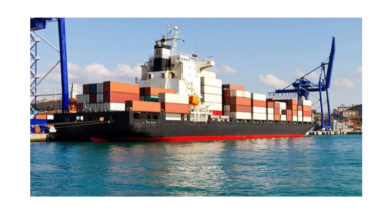Innovative packaging
4 ways brand owners are driving market demand
Digital print for packaging and labels is a fast-changing market, predicted by Smithers Pira to continue growing over the next few years. As a result, many equipment suppliers are developing digital equipment for the mainstream packaging market.
Globally, the market for digital printed packaging and labels continues to expand rapidly, driven by run length reduction, last stage customisation, versioning and personalisation, environmental factors and more. Smithers Pira forecasts that digital print for packaging will more than double from $6.6 billion in 2013 to $14.4 billion in 2018.
 There are various trends that are driving forward the market of digital print for packaging, for example the development in technology is a key driver, and brand owners in particular are driving growth.
There are various trends that are driving forward the market of digital print for packaging, for example the development in technology is a key driver, and brand owners in particular are driving growth.
Brand owners are used to differentiating a seller from its competitors, and packaging can provide brand owners and retailers with an opportunity to promote brand values and enhance consumer experience. The demands that brand owners and retailers have for their packaging include the packaging being fit for purpose in terms of strength, resistance, and shape; the acceptability of the quality of the graphics for the consumer to maintain the brand image; the ability of the design and graphics to promote sales and provide information to the consumer; and the ability of the packaging to perform in the filling line, through any distribution systems, in the retail outlet, and finally at the consumer level.
Digital printing may be seen as an effective way to meet some of the demands brand owners have for their packaging. Difficulties arise, however, due to brand owners typically being made up of many different departments, with varying demands and opinions on the best strategy to maximise profits. Marketing departments will be attracted by the expansion in marketing opportunities accessible through digital printing, such as versioning, targeted marketing, personalisation, customisation, regionalisation, special editions, consumer empathy, and interactive packaging such as QR coding. Other departments may be less keen, as they may have to bear the costs imposed by switching their strategies towards digital printing. Legal departments may have concerns over version control due to content being variable under digital printing. Financial departments may fail to see justification for the higher unit costs of digital printing compared to other more traditional printing methods. Designers and purchasing functions may have concerns over the additional workload they will face and the potential consequence of having to learn new production methods, possibly increasing the risk of errors.
Despite these complications, digital printing for packaging is nevertheless on the rise, driven by the benefits that it presents to brand owners.
There are four key ways in which brand owners are driving demand for digital print for packaging: added value; personalisation, brand protection, and flexibility
Added value
Brand owners demand differentiation. In addition, they desire increased brand recognition, brand awareness and consumer assurance – all factors that digitally printed packaging can help influence. As a result, a number of innovative digital tools have been developed to meet brand owner requirements.
Digital technology can create eye-catching effects, through embellished print and added value on labels, resulting in effects that have tactile properties beyond plain planographic print. Attention-grabbing decoration for high-value products and cosmetics provide added value to packaging, creating real brand differentiation.
The digital packaging sector is probably the most dynamic part of the whole printing industry, with equipment, software and consumable suppliers vying to provide new solutions to make inroads into the analogue dominated sector. In the US and Canada in 2014 digital label printing was 11% up in value over 2013 excluding the effects of inflation – with another 17% in 2015, as more powerful digital and hybrid presses come on stream.
Personalisation and versioning
Personalised packaging, although still a very small niche, is a hot trend in the current packaging market. Some brand owners have already demonstrated the ability to more directly engage consumers via personalised print – and many others are exploring the opportunities for similar approaches.
Personalised packaging is popular among brand owners not only because they can have more direct contact with consumers, but also because it can create consumer empathy, in that consumers can get a sense of brands making the effort to build a relationship with them on an individual level.
Digital printing enables personalisation of products, in that designs can be varied from product to product, in a way that would be otherwise unachievable using traditional printing methods – for instance, due to high costs of replacing printing plates. Personalisation requires short print runs, an area where digital printing excels.
Digital printers are changing their workflows to meet the demands of brand owners, who demand more functionality and innovation. Various brand owners are experimenting with the idea of personalised packaging. For example, Lindt enables consumers to personalise the packaging with a name and a message; and Heinz allows consumers to personalise a ‘Get well soon’ message on their tinned soup.
The most well-known personalised packaging campaign in the current market is Coca-Cola’s ‘Share a Coke with…’ campaign, in which cans and bottle labels are personalised with popular names in regional markets. This campaign has secured substantial consumer engagement and large-volume sales, according to Coca-Cola. While the high-volume demand meant that the bulk of the printing was actually accomplished using sheetfed offset, the campaign nevertheless highlights the benefits of personalised packaging well – a trend that, in many cases, will fit well with digital printing’s short-run capability.
Due to the benefits that it offers, brand owners are increasingly demanding more personalisation of packaging; as digital printers meet their needs, brand owners are driving the demand of digital printing.
Brand protection
Security is a key driver for the adoption of digital labels and packaging. High-resolution electrophotography allows microtext designs, hidden text and guilloche patterns. There are UV fluorescent toners and inks with specific taggants for specialist applications. These technologies are continually being developed, and the quality is improving.
Over the next few years digital printing has the potential for higher resolution from inkjet, while new toners and inks will provide new security features for anti-counterfeiting and brand protection.
In terms of track-and-trace, there has been increasing legislation for tracking individual packs for pharmaceuticals. Going forward there is potential for end users to validate the pack, with QR code recognition on smartphones making the process quick and easy.
Opportunities for brand protection and security to be included in packaging have been opened up through the development of conductive inks. The conductive ink market is set to develop rapidly in the next few years. New generations of conductive inks – especially advanced digital inks based on materials such as carbon, silver, gold, and palladium – will present new opportunities for device construction and performance. Conductive inks have been developed to replace RFID codes at a fraction of the cost, offering enhanced security compared to QR codes. Conductive inks are being used to develop technologies such as TouchCode – which, among many applications, provides product verification and brand protection.
Digital printing technologies can therefore give brand owners access to better security and brand protection, and thus the demand for improved security and brand protection is a key driver for the adoption of digital printing by brand owners.
Flexibility
Brand owners increasingly require more flexibility when it comes to the printing of their packaging. This flexibility refers to having more time, saving costs and having more creative ability.
A variety of requirements are increasing the demand for short-run printing, which itself is an important driver for the adoption of digital printing technology. Digital printing is meeting this demand by delivering short runs rapidly and at a lower cost, allowing brand owners to keep up with market trends.
Print firm Landa has created the Nanography process, which it hopes will bring digital print into the mainstream for packaging production. Due to its flexibility, the process aims to meet brand owner demands and potentially drive growth of digital print for packaging after its launch in 2015.
Nanography, an indirect inkjet process, uses water-based polymer ink pigments, which are deposited in nanodroplets. The nanodroplets adhere to any surface, with the thinnest ink coverage of any print process. The nanodroplets dry before they contact the substrate and can be used on any type of material in a process at very high speeds. The ultra-sharp dots produced offer an extremely high level of uniformity and colour performance, combined with high abrasion resistance. The volume of ink required is much smaller too, significantly lowering the cost of consumables, although there is some debate about this.
The flexibility of the Nanographic process will be a crucial factor in determining its market traction. The process has the potential of digitally printing on all manner of packaging materials and formats, at a significantly lower cost. At the same time it allows short production runs and facilitates personalised packaging runs, all with a quicker turnaround time, according to Landa.
As digital printing technology is evolving, there is an increasing demand from brand owners and retailers for digital printing methods, as they take advantage of the creative and production benefits that digital printing has to offer. More solutions are on their way to meet brand owners’ requirements from digital print for packaging. At drupa, there will certainly be machines that get the right balance of quality, productivity (higher) and costing (lower) that allows buyers to accomplish new methods of connecting with customers.
The evolution of digital printing labels facilitates more efficient production, and gives brand owners the flexibility to produce exactly what they want, when they want it. The increased flexibility digital print brings will allow brand owners to experiment and succeed in applying digital print to their packaging needs.

.gif)



